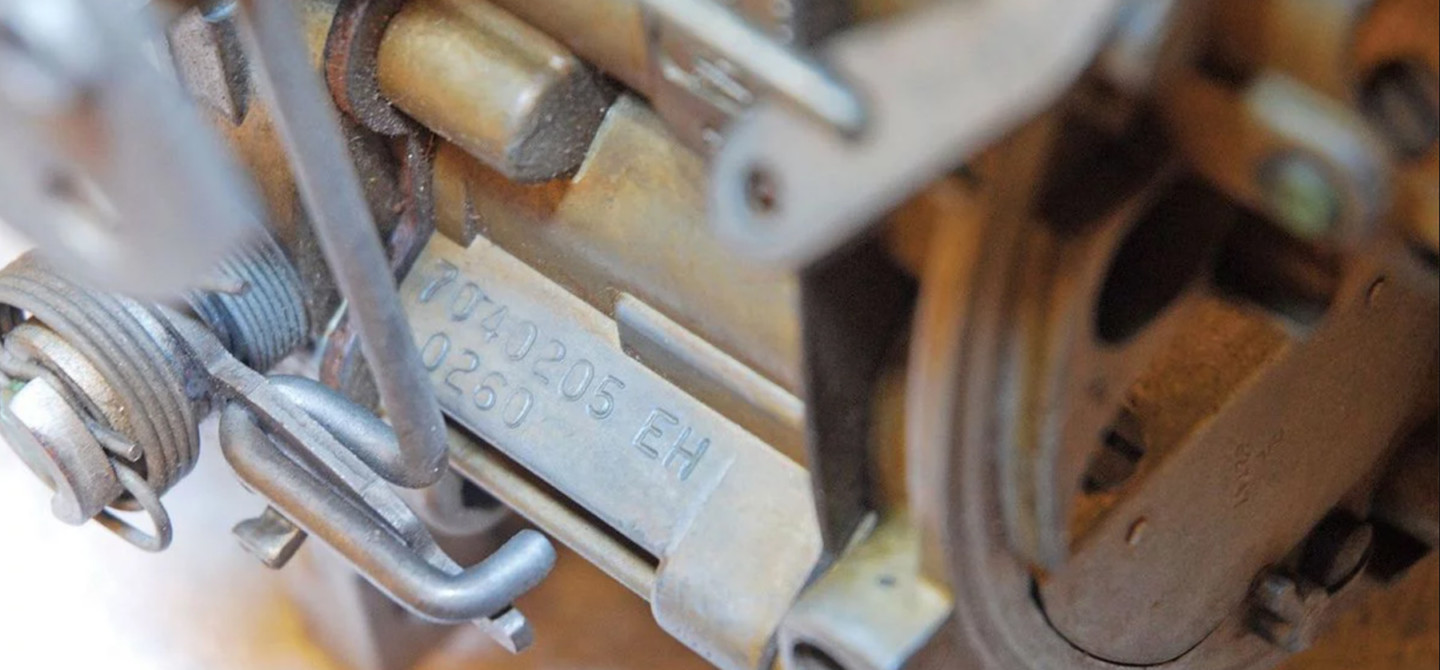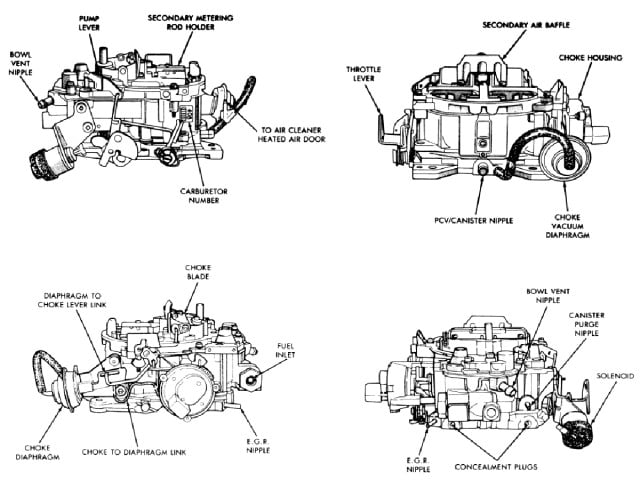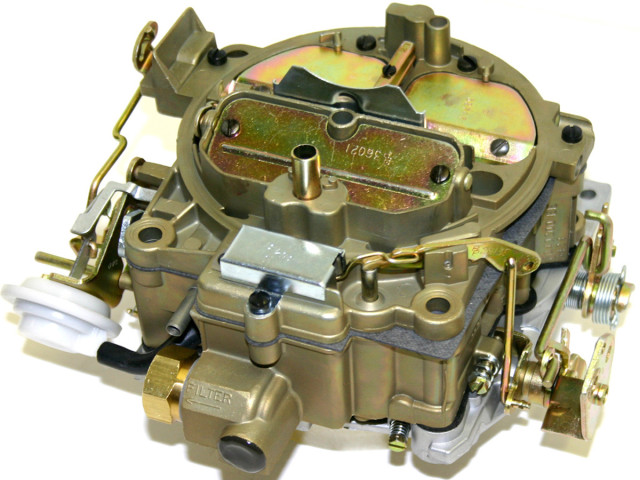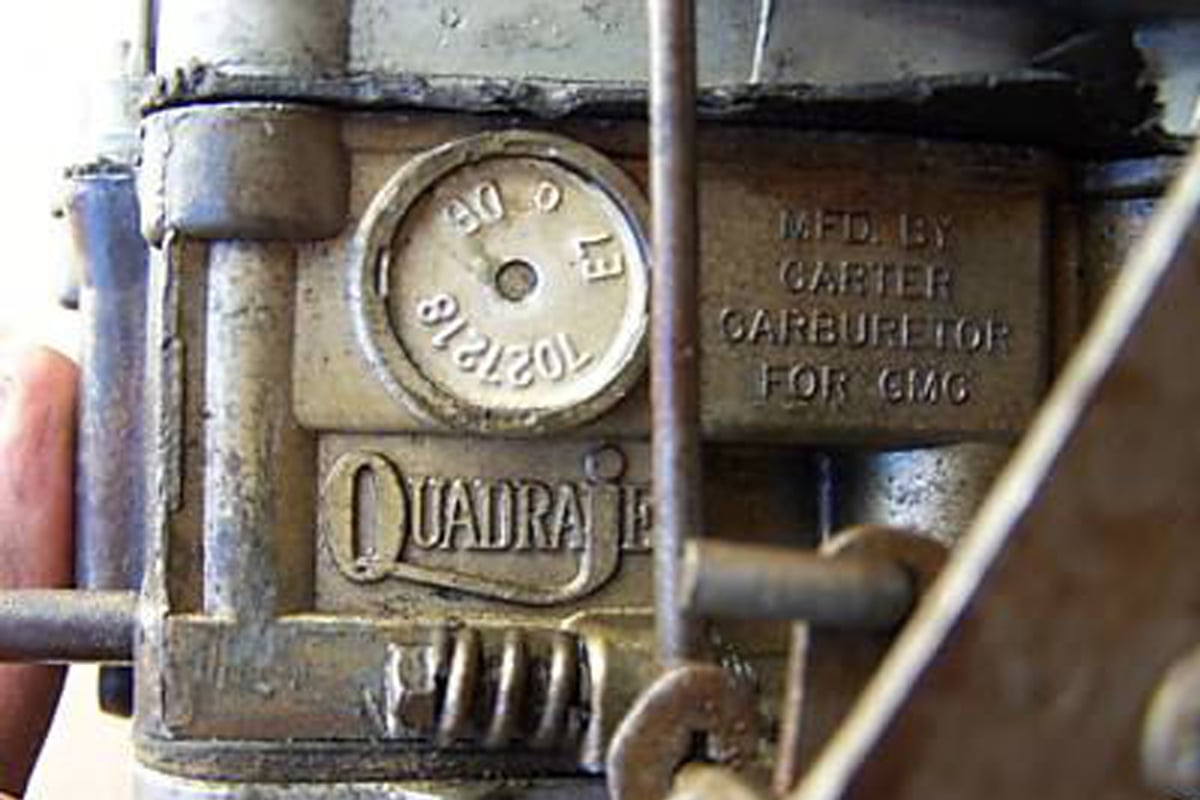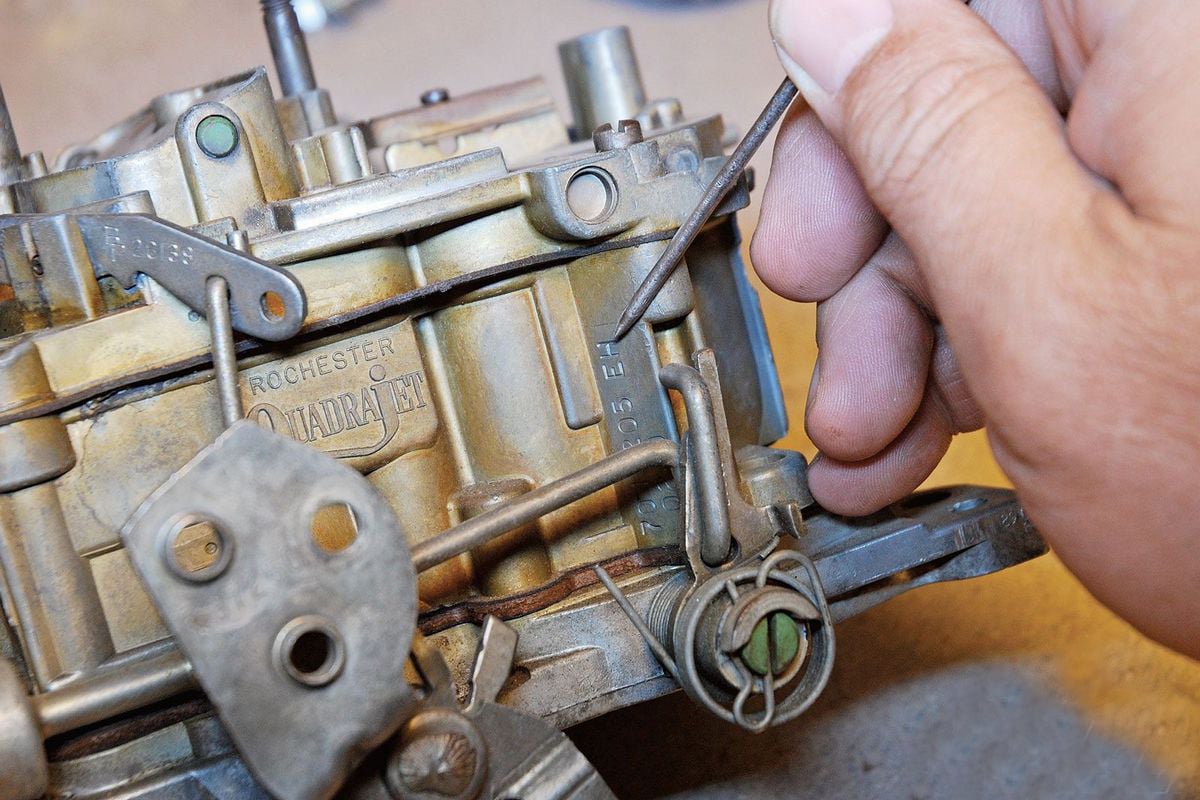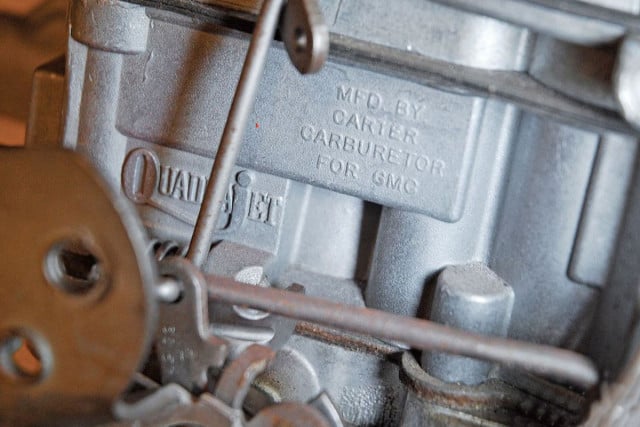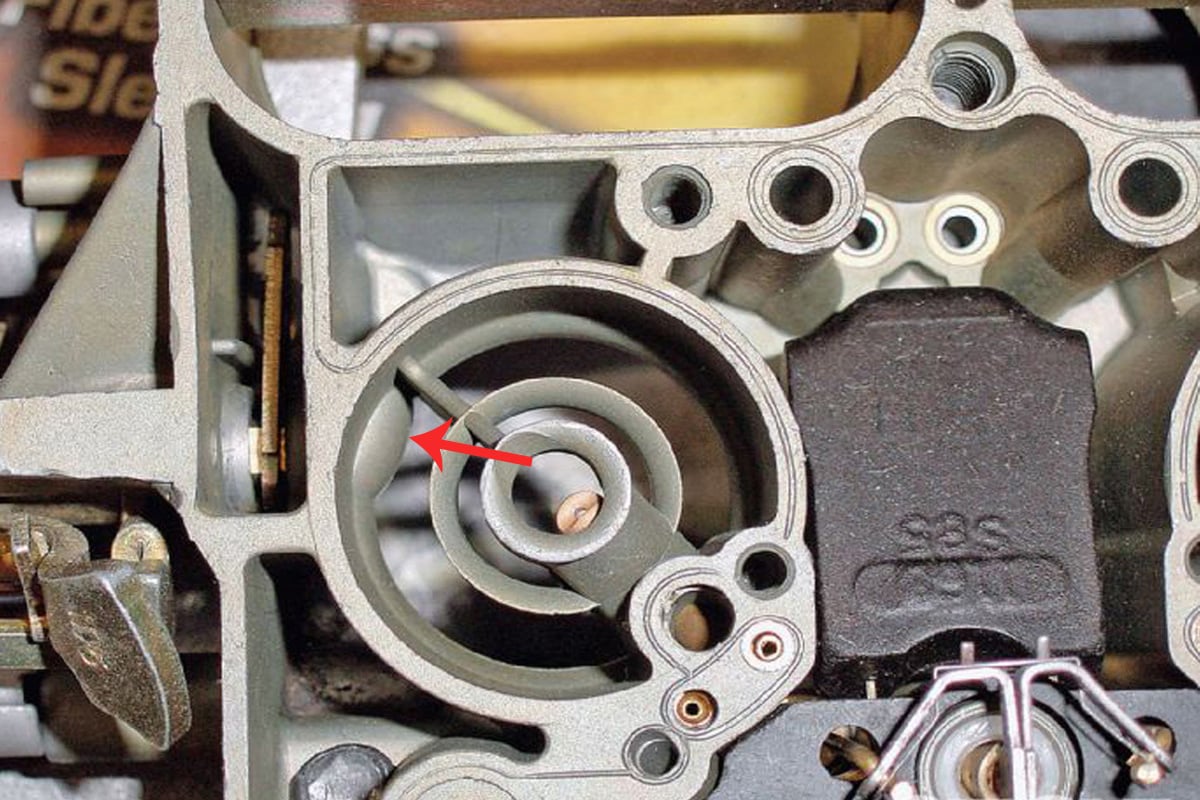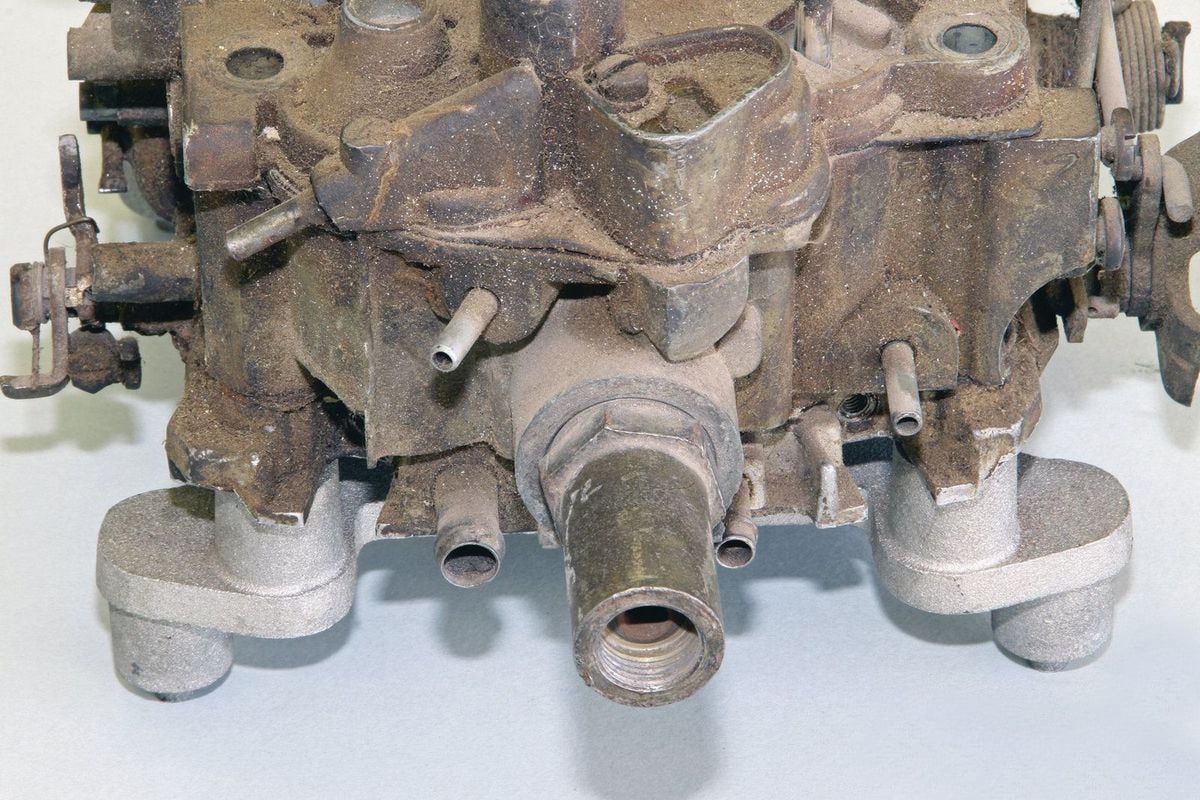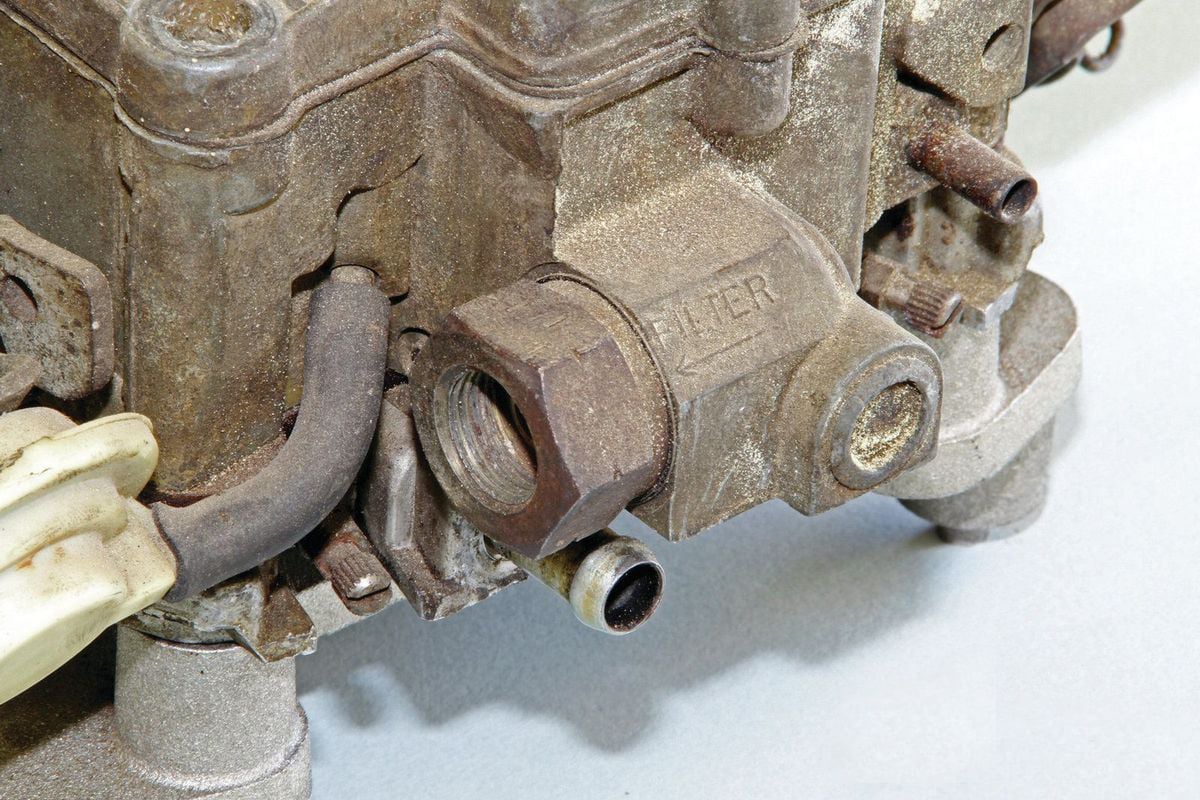It is within very small circles that the Rochester Quadrajet is ever considered a performance carburetor. Although it was placed on many of the vehicles Chevrolet built from the ’60s until the late ’70s – as well as some Chrysler products – it still does not get the respect it deserves. When talking to guys about restorations however, it is highly regarded as the go-to carburetor.
Since there are so many variations of the carburetor and each one has a different factory application, we decided that giving you guys an identification guide would be beneficial for when you are scouring the swap meet or local junkyard for the correct unit for your car.
Although the Quadrajet is not as popular of a performance upgrade as some of the aftermarket brands, it is still a very good alternative for many spread-bore, four-barrel applications, especially when you are trying to find a little economy to go with your performance.
Few people still fail to realize the Quadrajet has a strong racing heritage within the Stock and Super Stock drag racing classes. In fact, there have been a multitude of record-holding Super Stock race cars that have run in the 9-second bracket with a Quadrajet on top of their manifolds.
How It Began
The Quadrajet was released in 1965, and since then, saw a long and fruitful life installed on GM cars until EFI took over. The Quadrajet was actually the successor to the previously-built Rochester 4GC carburetor that was manufactured from 1952 to 1967. This new carburetor was blended with what Rochester knew about carburetors, mixed with ideas from other manufacturers, (spread-bore design and vacuum secondaries). The Quadrajet became an instant success.
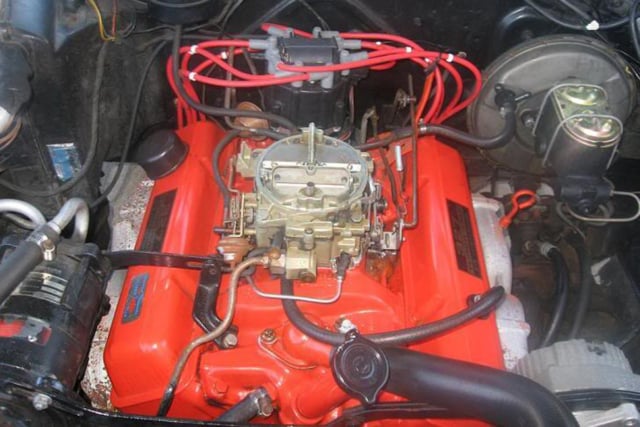
The Quadrajet carburetor was available on GM passenger and performance cars, as well as its trucks. Image courtesy www.chevytalk.com
When part-throttle cruising, the small primaries (1 3/32-inch for 750 cfm, and 1 7/32-inch for 800 cfm carburetors) deliver a higher velocity into the intake than other carburetors. This results in better fuel atomization going into the intake. This, of course, is dependent upon whether the fuel metering, float level, idle-screw setting, throttle-blade angle, jets, power valve, air bleeds, and needle valves, etc., are all properly set.
While there are some GM street-car enthusiasts that swear by the Quadrajet, they are also disliked by almost as many. The stigma surrounding the Quadrajet has to do with the perceived lack of performance capabilities, and because rebuilding them is not quite as easy as, let’s say, a Holley. Many even call them “Qaudrabog” carburetors because of the sound that occurs when the secondaries open.
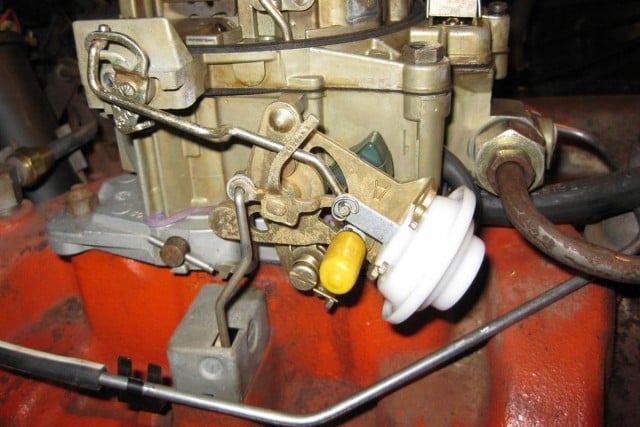
The choke mechanism on a 4MV Quadrajet made use of a coiled spring that is mounted under a shield to the manifold.
Since this actually occurs when the carburetor is not properly tuned, it is an ill-conceived, derogatory name. Either way, parts are easy to find, and a properly rebuilt Quadrajet will perform just as well as many aftermarket units when used in a proper application. In fact, even Chrysler used Quadrajet carburetors in the late ’80s, proving their popularity over the Carter Thermoquad with the engineers at Mopar.
Model Differentiation
There were many models of Quadrajets used throughout the years, which tells of the versatility. The first few versions to appear were coded 4MC, which utilized a side-mounted integral choke, and the 4MV that made use of a manifold-mounted choke.
Benefits Of A Quadrajet
Economy: Since the Quadrajet has different-sized primary and secondary venturi, the small primaries make the carburetor more efficient than even a large two-barrel, or square-bore four-barrel. The smaller primaries act as a small two-barrel carburetor until the accelerator is pressed far enough to open the secondaries.
Drivability: The small primaries deliver great throttle response at part-throttle application.
Off Road: The Quadrajet’s centrally-located float is highly resistant to fuel slosh caused by cornering, hill climbing, or acceleration.
When discussing Quadrajet models, the number 4 means a four-barrel carburetor. The “M” after that, is a style/model type. Early Rochester four barrels were a “G” series. So, a 4M is a Quadrajet, and a 2M is a two-barrel Dualjet. The next letter, V, C, or E stands for the type of the choke’s thermostatic coil. If there is an E before the number 4, that designates an electronically-controlled carburetor. If it has an M before the 4, that’s a “modified” Quadrajet, built starting in 1975.
Carburetors built before mid-1968, have a tag with the part number. In late 1968, the seven-digit part number was stamped vertically into the main housing
First Or Second Generation
All Rochester Quadrajet carburetors are identified by a seven- or eight-digit GM part number. On units made before mid-1968, the part number was stamped around the outside edge of a round metal tag attached to the fuel bowl. Sometime after mid-year 1968, Rochester moved the part number to the flat area near the secondaries, just behind the secondary linkage. The part number of the carburetor will tell you things such as when it was built, and where it originally came from. But, not all Quadrajet carburetors were built by Rochester.
Carter Carburetors was also contracted to build the Quadrajet carburetor for GM cars from 1966 into the late-1970s. So, do not get alarmed if you see a Carter-built Quadrajet with a Rochester part number on it. If you find one with a triangular tag on it, and the standard four-digit Carter part number is followed by an S, that would mean that carburetor was an aftermarket replacement. Any and all replacement parts between Carter and Rochester are directly interchangeable.
If the Quadrajet you’re looking at has a seven-digit part number ranging from 702 through 704, these were built before 1976. On these units, the number immediately following these three digits, will designate the actual year of production. After that, you will find either a 2, or a 5. The number 5 designates an emission carburetor from California. 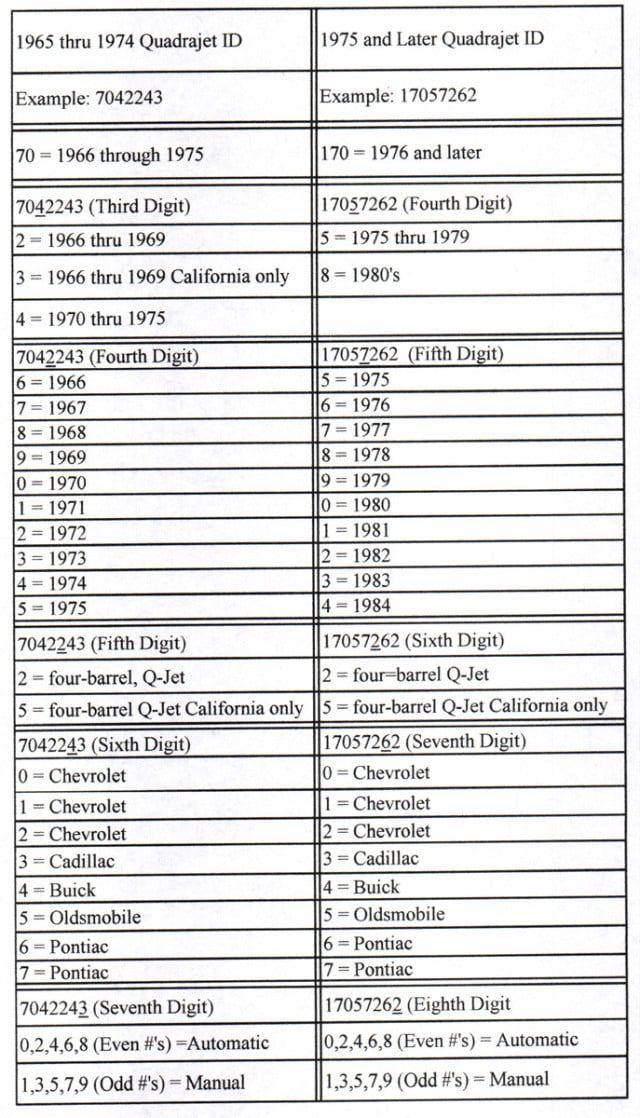 The digit following the number 2 (or 5), will indicate the type of GM car it was originally installed. A 4 would mean it is for a Buick, a 5 would mean Oldsmobile, and Pontiac carburetors usually have a 6 or 7.
The digit following the number 2 (or 5), will indicate the type of GM car it was originally installed. A 4 would mean it is for a Buick, a 5 would mean Oldsmobile, and Pontiac carburetors usually have a 6 or 7.
Chevrolet Quadrajet carburetors would have a 0, 1, or even a 2. The last two remaining digits determine whether the carburetor came from a car equipped with an automatic or manual transmission. Usually an even number will indicate an automatic car, while odd numbers indicate a manual transmission. Carburetors installed on Cadillacs, however, do not follow this rule of thumb. Those carburetors might very well have any of the above model numbers.
Quadrajet carburetors built after 1976, use an eight-digit casting number. These carburetors do not follow the identification numbers of previous years; they will start with either 1705 or 1708. The number 1705 identifies the unit as being built between 1976 and 1979. If your carburetor reads 1708, it was built in the ’80s. While the fourth number denotes the decade, the fifth digit designates the actual year in which it was produced. The last three digits will unfortunately, give you no information about the carburetor, unless you have a Rochester numerical reference chart.
Big Or Even Bigger – 750 Vs. 800 CFM
If your 4M, 4MC, or 4MV Quadrajet was built before 1972, it is a 750 cfm carburetor. After 1972, the CFM rating on all three models was raised to 800. Differentiating a 750 cfm from an 800 cfm casting is easy to do by looking through the primary venturi barrels.
The carburetor on the left has the bulge (arrow), and is an 800 cfm unit. The one on the right does not have the bulge, which makes it a 750 cfm unit.
When looking through the primaries, if you see a pronounced bulge protruding from the side of the wall surface, you have an 800 cfm carburetor. The primary wall of the 750 cfm unit does not have this bulge, and is consistent throughout.
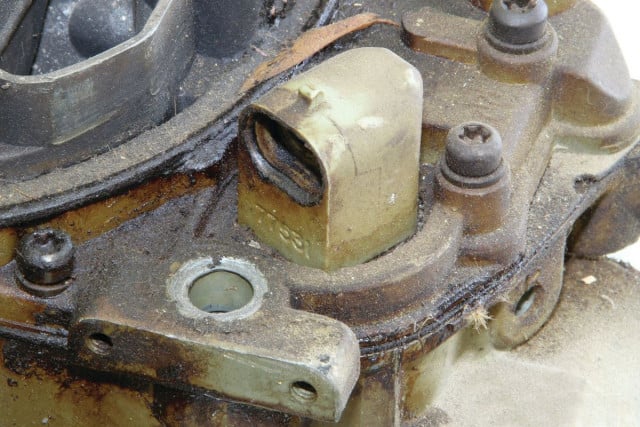
In the early ’80s, GM incorporated electronic connections to the Quadrajet. The Quadrajet’s primary circuit had a small solenoid installed to control the depth of the primary metering rods. These Quadrajets are difficult to modify for conventional use.
From 1975 through 1979, the M4MC was used in GM four-barrel applications, and utilized the standard carburetor-mounted choke and dual choke pull-offs. The M4ME was added in 1976 and is similar to the M4MC, but uses an electric choke. Both of these carburetors can be used as replacement carburetors for the two earlier 4MC and 4MV applications. As a side note, if you’re looking for a M4ME it was also used on 1985 through 1988 Dodge trucks with a 360ci engine.
There are later versions of the Quadrajet that were introduced in 1981, but these were designed to work in conjunction with onboard computers, so we will not get into those. An easy way to determine of you have this E4ME Quadrajet, is the fuel inlet faces straight into the front of the carburetor — instead of connecting at a 90-degree angle — and there will be an electronic connection capability.
Dating Your Carburetor
Most Rochester-built Quadrajet carburetors were given a four-number date stamp. This code can be deciphered as such: the first three numbers are the day of the year (082x = 82nd day of the year) the carburetor was built. The last number is the year (0828 = 82nd day of 1968).
All Quadrajet fuel inlets are in one of two positions. Carburetors intended for Chevrolet, Cadillac, Buick (’67 only), and GMC applications, utilize a fuel inlet that enters the carburetor at a 90-degree angle, facing the passenger's side of the engine. Buick (’68 and newer), Oldsmobile, and Pontiac castings utilize a fuel inlet that is pointing toward the front of the car.
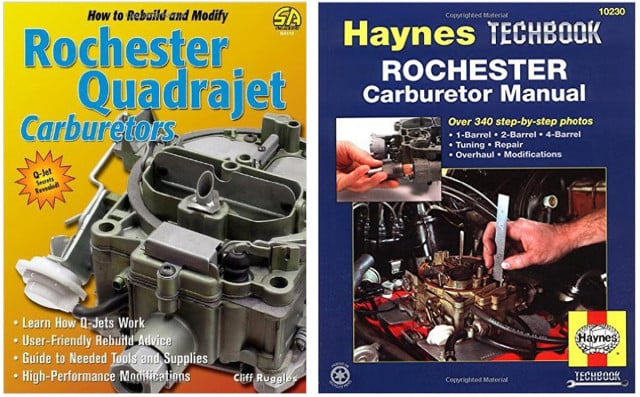
If you are interested in doing some more reading, the Books Rochester Carburetors by Doug Roe, and Haynes Rochester Carburetor Manual by Mike Stubblefield and John Haynes are both very good technical resources for the rebuilding the Quadrajet.
One thing to keep in mind, when trying to date a carburetor, is that the year of production might not always be the same year as indicated by the number on the carburetor. There were an untold number of “replacement” carburetors produced, and it is not unusual to find some with later production dates than what is indicated by the carburetor number.
Throwing another glitch in the program, is the fact that some Carter-built carburetors produced in the late 1960s might have been used on a different model year than the number shown on the carburetor. This was most common in the 1968 and 1969 models, as Rochester was not able to keep up with production.
Finding a compatible donor carburetor for your application should be relatively simple. There are a countless numbers of Quadrajet carburetors still being used, or just waiting for you to rescue them from the local salvage yard. They are a very affordable four-barrel carburetor, and used units can be had for as little as $50 and up. Not only that, but just about every corner auto parts store has a rebuild kit available, depending on the Rochester model you have.
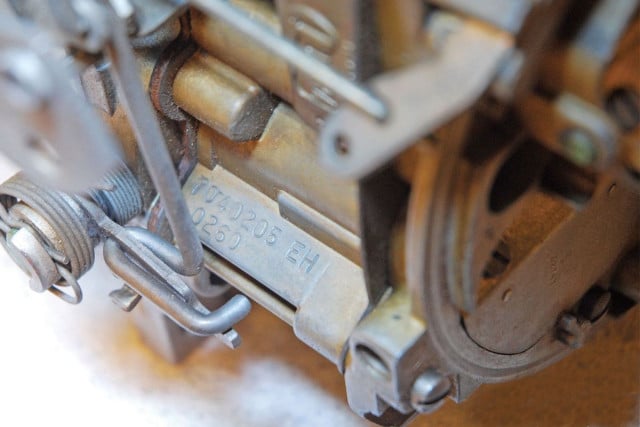
A carburetor with the number 7040205 followed by a Julian date of 0260 would have been built the 26th day of 1970.
Hopefully this outline of how to identify a Quadrajet will help you get you car properly restored, or give you the incentive to install one of these over-looked carburetors on your classic Chevy car or truck.


